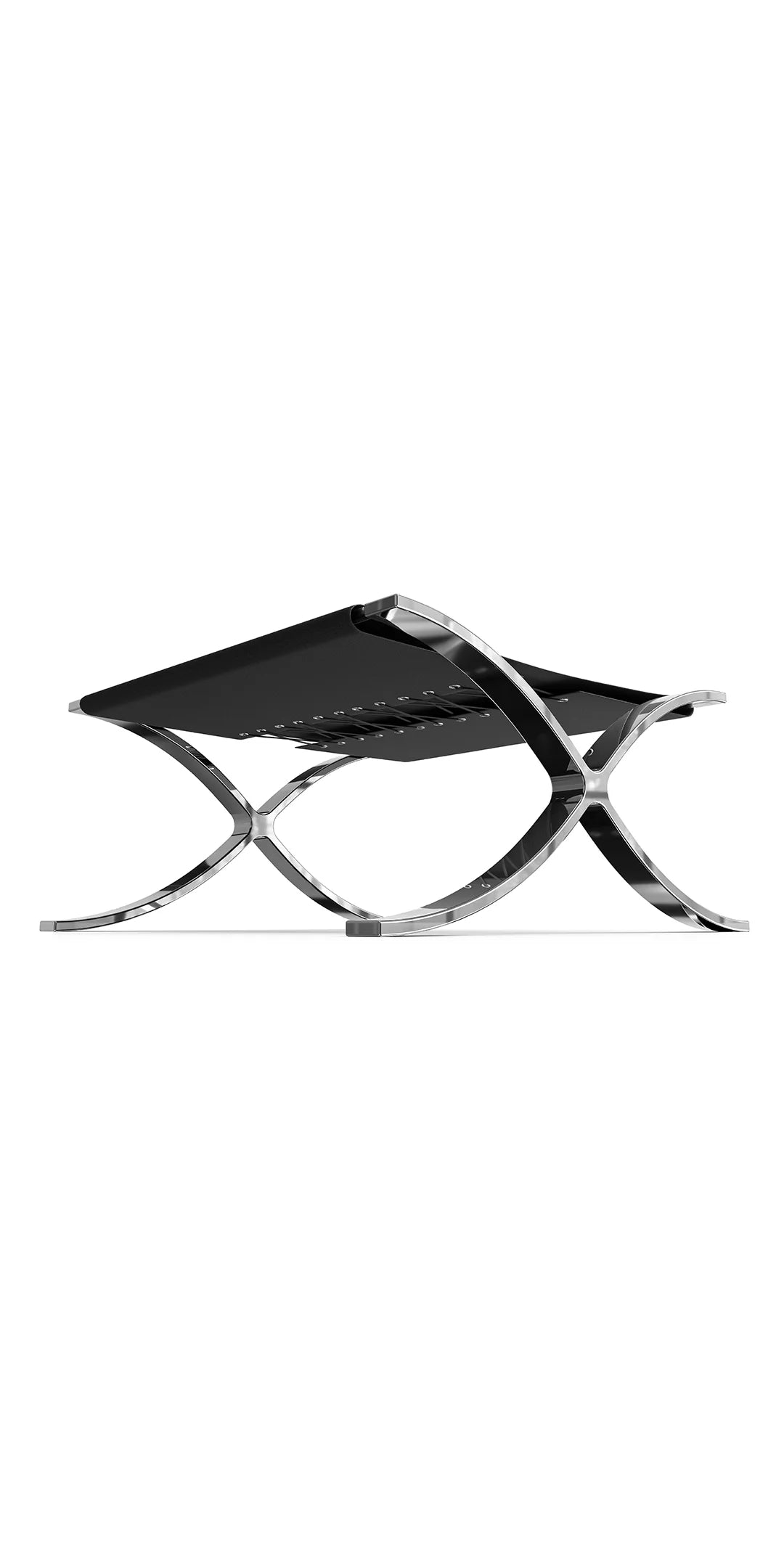
Barcelona Stool with Cowhide Sling | Hommage À Mies van der Rohe, 1930
Barna Series: Sling Stool
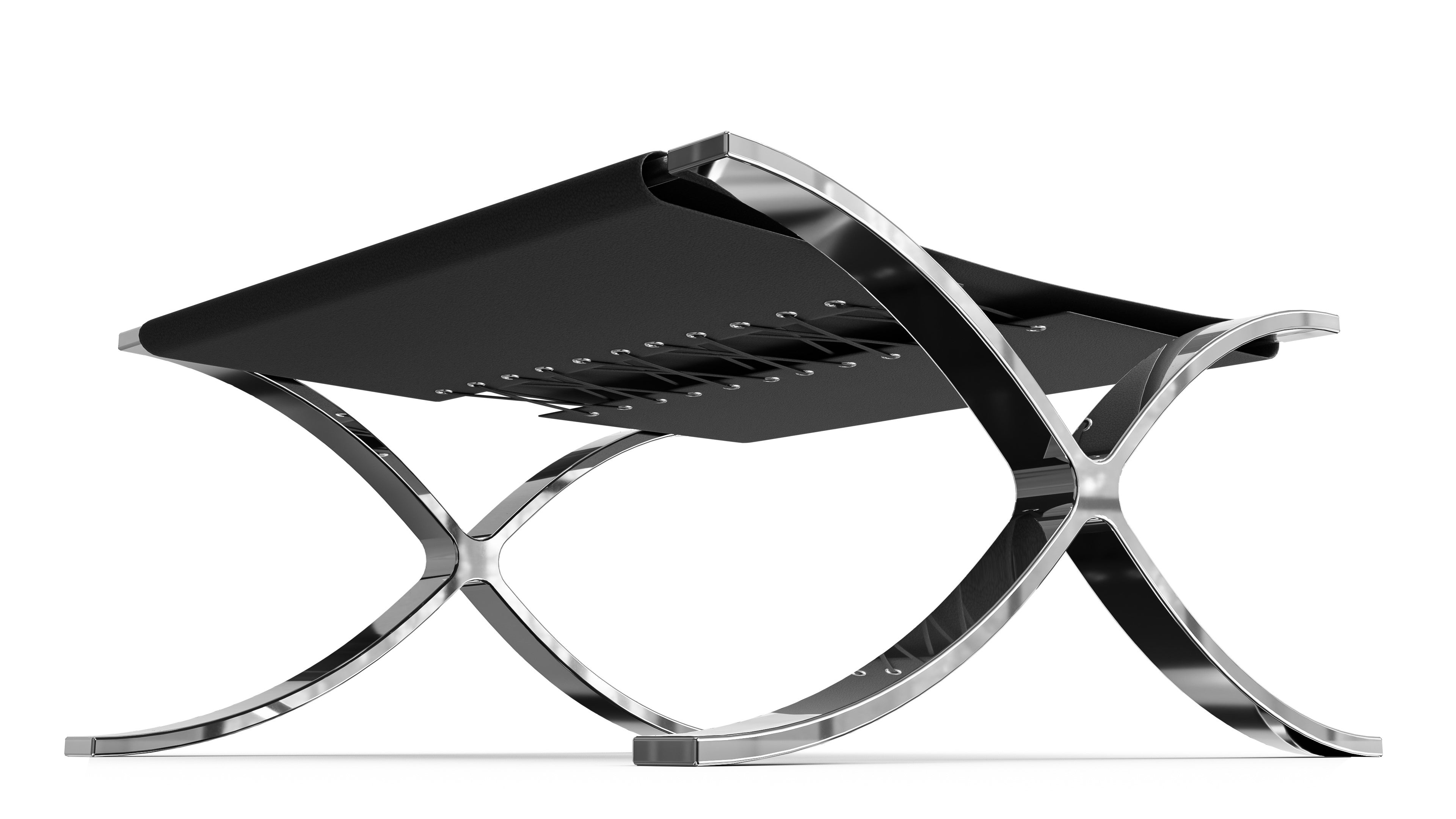
Barcelona Stool with Cowhide Sling | Hommage À Mies van der Rohe, 1930
Barna Series: Sling Stool
Hommage À Mies van der Rohe
Barna Series: Sling Stool
Barna Series: Sling Stool
Couldn't load pickup availability
Delivered In: 10-14 weeks
The Barna Series: Sling Stool, designed by Ludwig Mies van der Rohe in 1930 as the Barcelona Sling Stool, evolved from the furniture created for the Barcelona Pavilion of 1929. Combining the x-shaped steel base of the Barna Lounge Chair with the sling design of the MR Sling Side Chair, this stool features a cowhide seat secured with leather laces and aluminum rivets.
Designed alongside the Barcelona Series to welcome Spanish royalty, the Barna Series: Sling Stool remains a timeless piece of modern design.
Shown in Black Leather on Hand Ground & Mirror Chromed Stainless Steel.
The Archetype Forms Barna Series: Sling Stool is a faithful reproduction of the original Mies van der Rohe Barcelona Stool with Cowhide Sling.
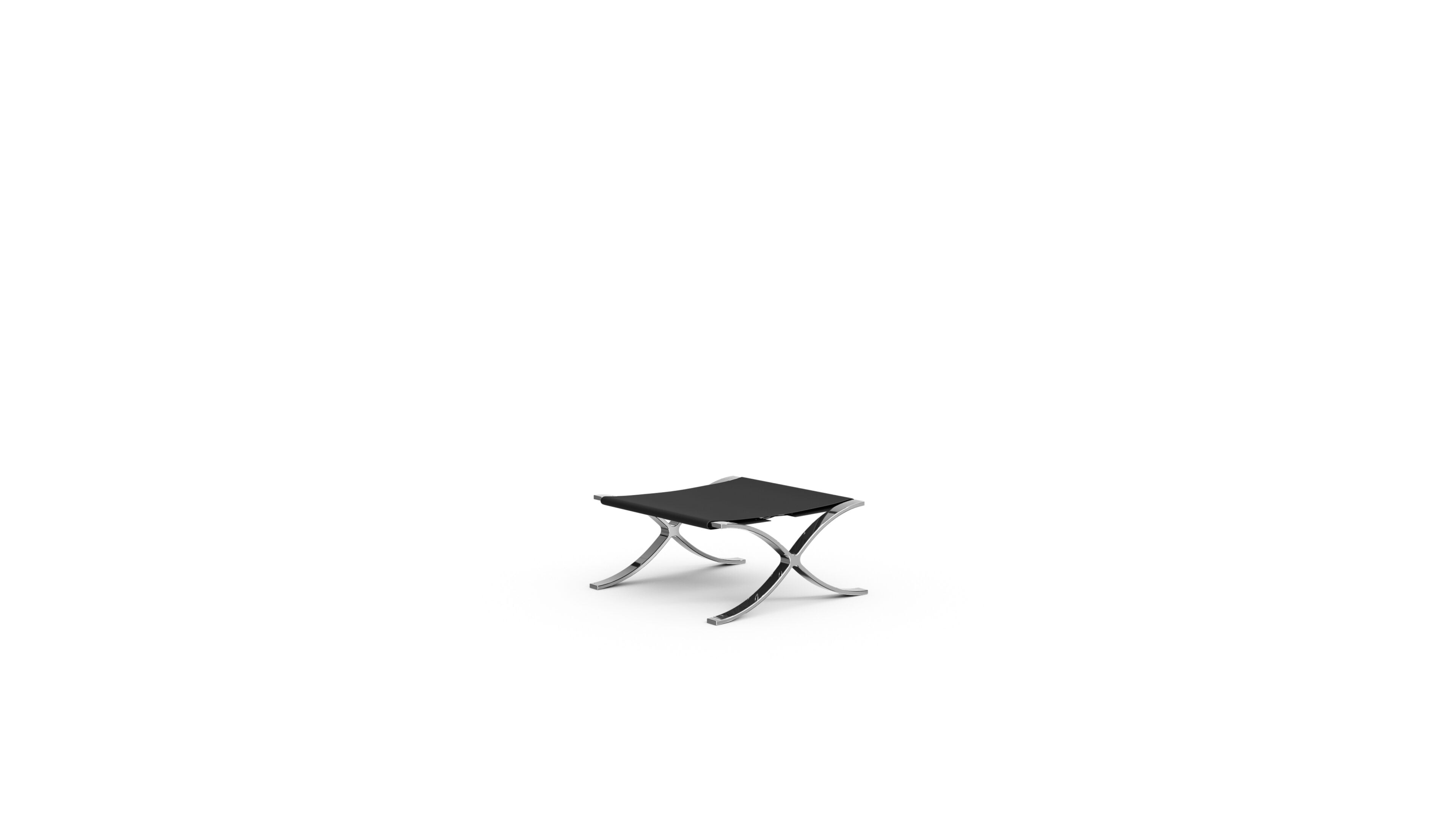
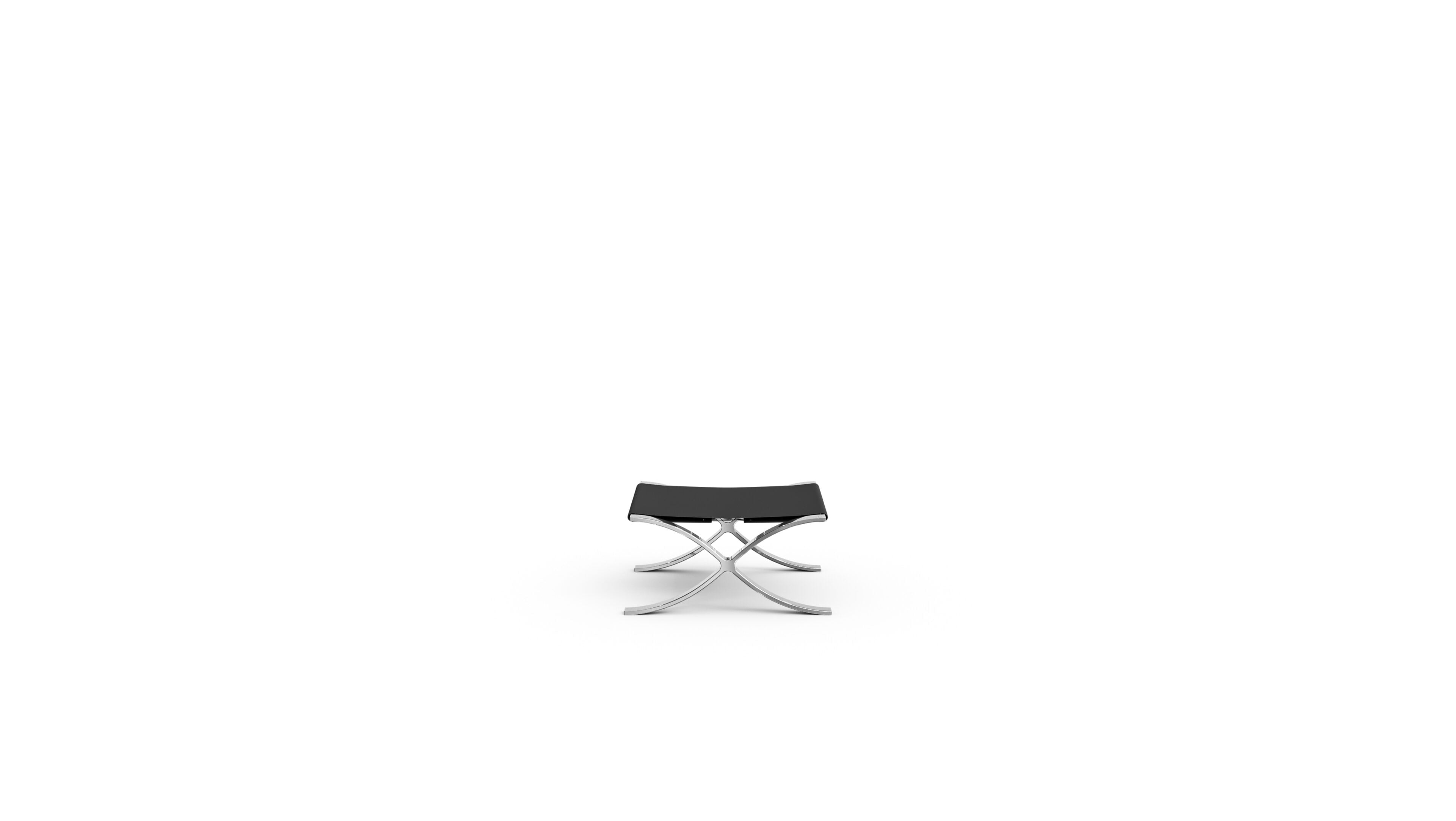
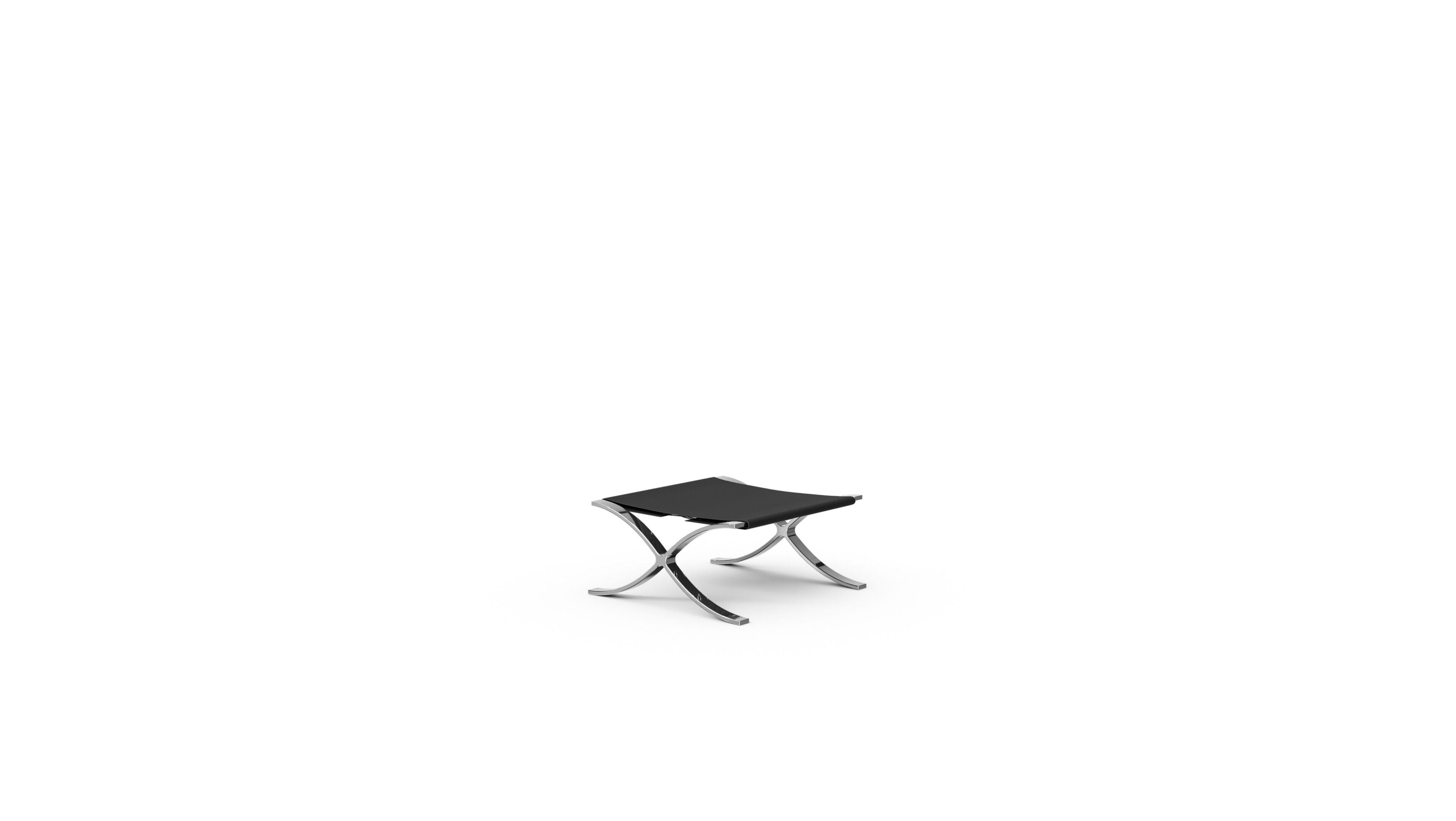
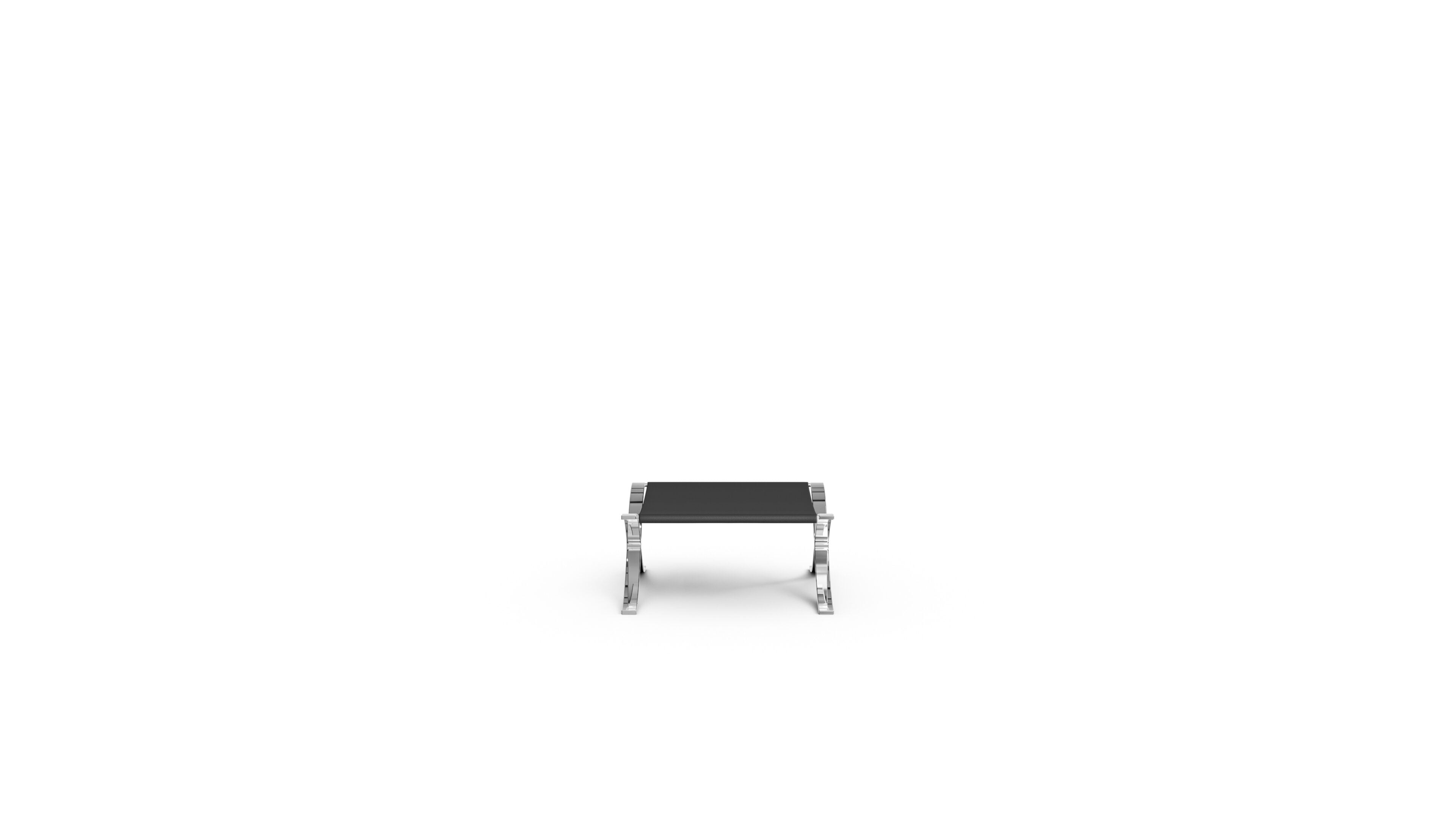
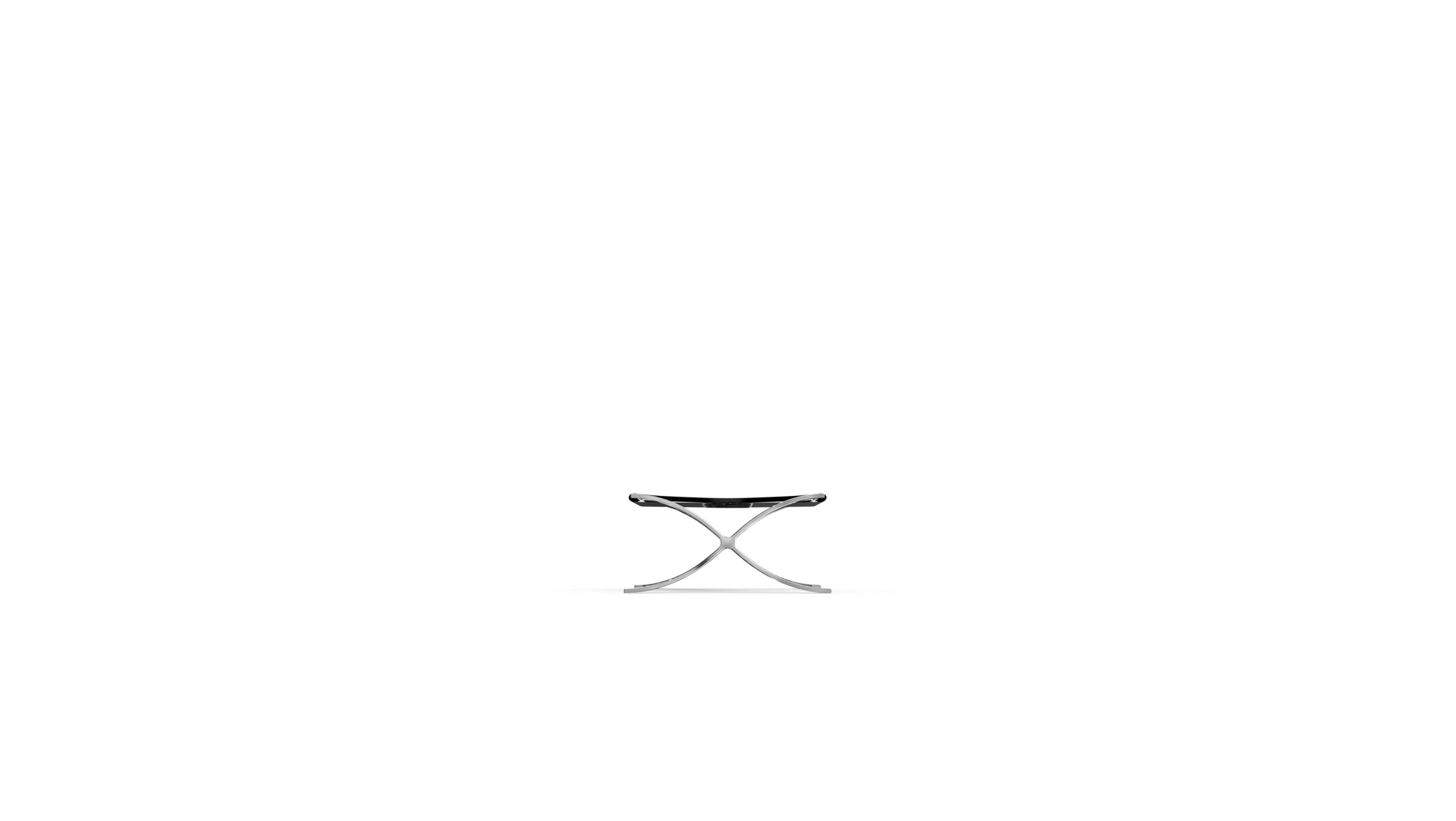
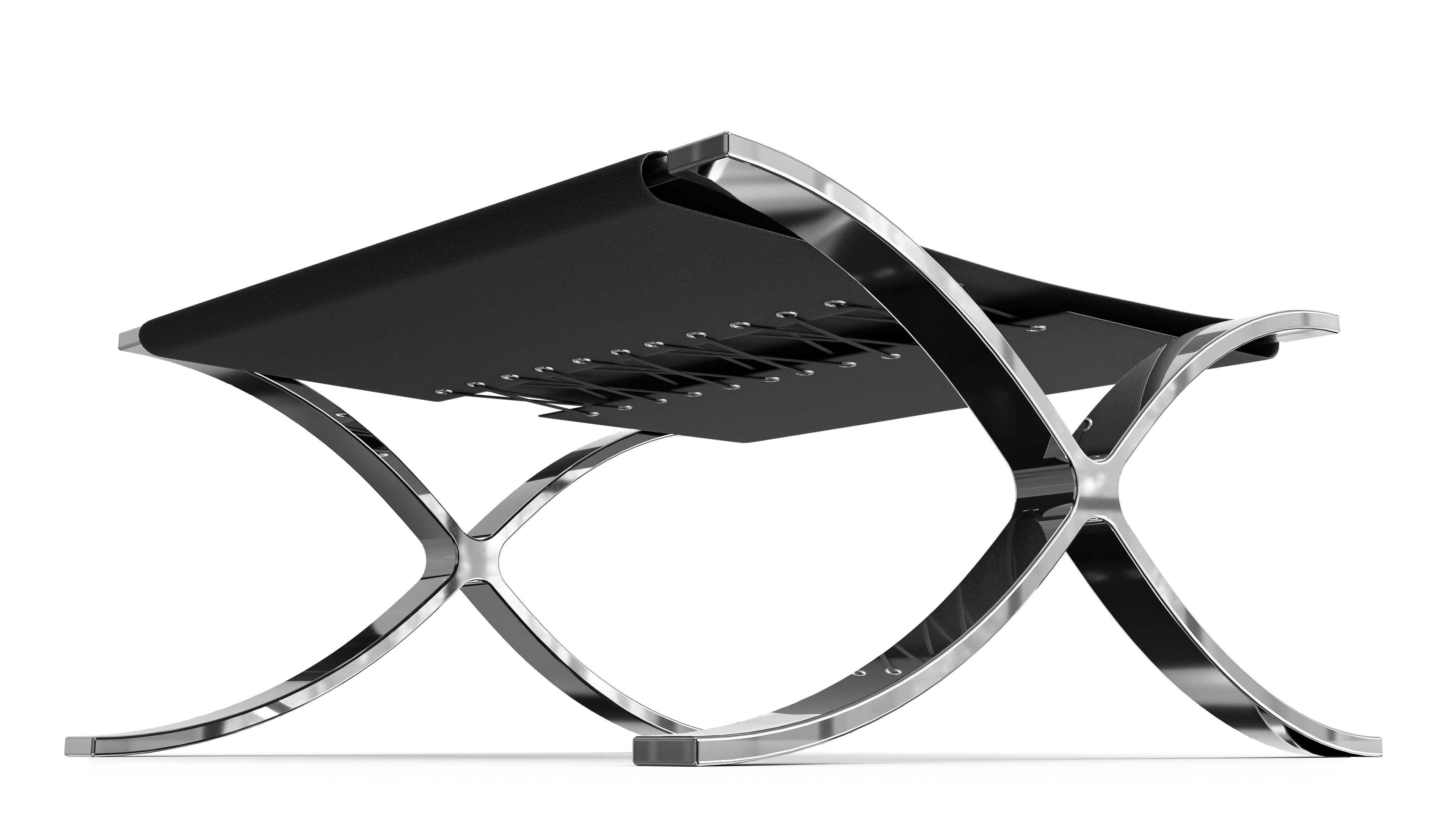
Image Disclaimer
The images shown are for illustrative purposes only. The actual finishes and/or patterns may vary due to the unique characteristics of natural & other raw materials. Colors and textures may appear differently across different devices and screen settings.
Product Information
Product Details
Barna Series Sling Stool
The Barna Series: Sling Stool, originally designed by Ludwig Mies van der Rohe in 1930, is closely associated with the furniture created for the Barcelona Pavilion of 1929. A year after the Pavilion’s debut, Mies continued to refine and expand his designs, leading to the development of the Sling Stool. Combining the x-shaped steel base of the Barna Lounge Chair with the sling design of the MR Collection, this stool highlights Mies’s innovative use of modern materials and minimalist design principles.
The stool features a cowhide sling, carefully attached to the frame with leather laces and secured with aluminum rivets. This construction ensures durability while maintaining a sleek, tailored appearance. The hand-ground and polished stainless steel base adds both structural integrity and a reflective finish that enhances its presence in any setting.
Originally part of the Barna Series designed to accommodate Spanish royalty during receptions at the Pavilion, the Sling Stool balances simplicity and elegance, aligning with Mies’s philosophy of "eliminating the superfluous." Its versatile design allows it to function as seating, a footrest, or a decorative piece in modern interiors.
The original design of the Barcelona Stool with Cowhide Sling is part of the Museum of Modern Art (MoMA) permanent collection and received the MoMA Award in 1977, solidifying its status as a significant work of modern furniture design.
Shop the Barna Series: Sling Stool, originally designed as the Barcelona Stool with Cowhide Sling by Mies van der Rohe, online in Canada and the USA. Bring the history of Bauhaus Design and International Style into your space.
Designer
Mies van der Rohe
Ludwig Mies van der Rohe was a German-American architect and designer who profoundly shaped modern architecture and furniture design. He began his career in Berlin before emigrating to the United States in 1937. Van der Rohe''s minimalist aesthetic is epitomized by his motto "less is more." His iconic Barcelona Chair and Ottoman (1929) were designed with Lilly Reich for welcoming the Spanish King and Queen to the German Pavilion at the Barcelona International Exhibition. His Barcelona Daybed (1930) and MR Chair series (1927) further showcase his mastery of minimalist form with organic and industrial materials. Mies's architectural achievements include the Seagram Building in New York and the Farnsworth House . His work is characterized by clean lines, detailed craftsmanship, and innovative use of industrial materials.
Construction
Upholstery: Custom Premium Hide Sling Selection from Archetype Forms
Lacing: Leather
Structure: Polished & Ground 304 Stainless Steel in Chrome or Other Premium Treated, Painted or Powder-Coated Option from Archetype Forms
Attachment: Aluminum Rivets
Reproduction
The Archetype Forms Barna Series: Sling Stool is a faithful reproduction of the original Mies van der Rohe Barcelona Stool with Cowhide Sling. This item is not manufactured by or affiliated with the original designer(s) and associated parties.
Dimensions
Width (in): 21.5"
Height (in): 12.25"
Depth (in): 23"
_
Width (cm): 54.6 cm
Height (cm): 31.1 cm
Depth (in): 58.4 cm

Hommage À Mies van der Rohe
Shop Mies van der RoheLudwig Mies van der Rohe was a German-American architect and designer who profoundly shaped modern architecture and furniture design. He began his career in Berlin before emigrating to the United States in 1937. Van der Rohe''s minimalist aesthetic is epitomized by his motto "less is more." His iconic Barcelona Chair and Ottoman (1929) were designed with Lilly Reich for welcoming the Spanish King and Queen to the German Pavilion at the Barcelona International Exhibition. His Barcelona Daybed (1930) and MR Chair series (1927) further showcase his mastery of minimalist form with organic and industrial materials. Mies's architectural achievements include the Seagram Building in New York and the Farnsworth House . His work is characterized by clean lines, detailed craftsmanship, and innovative use of industrial materials.





